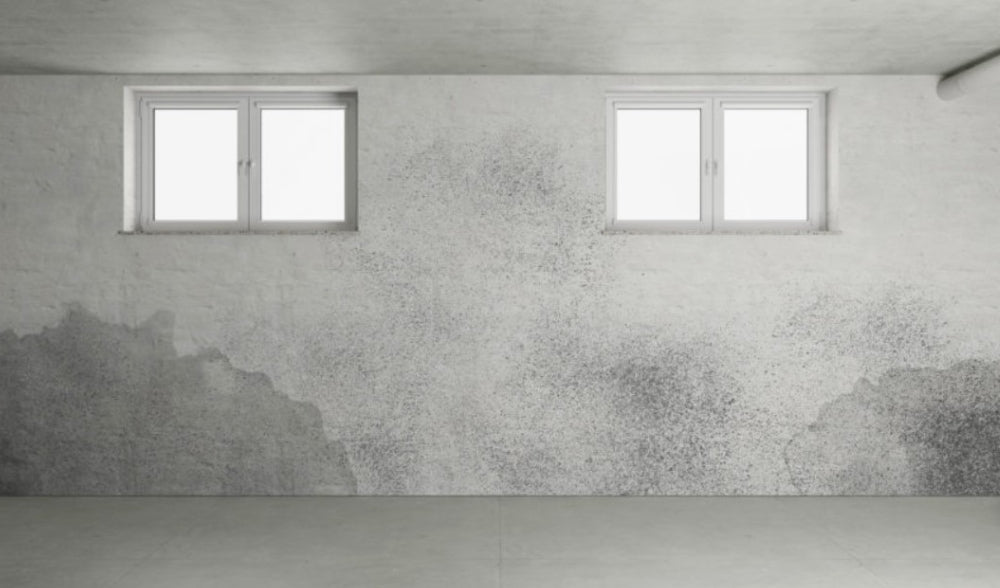
Benefits of Ozone in Fire, Water, Smoke, and Mold Restoration
Share
Mold, water, fire, and smoke damage can be costly and time consuming to repair. However, using ozone in the restoration process can help to speed up the process and reduce costs. Ozone is a powerful oxidizing agent that can break down odors and contaminants quickly and efficiently. In addition, it is a natural disinfectant that can kill bacteria and viruses. For these reasons, ozone is often used in restoration projects to get the property back to its pre-damage condition as quickly as possible.
What is Ozone?
Ozone is a naturally occurring gas. It protects our planet from harmful solar radiation wavelengths in the upper levels of our atmosphere. When ozone is present near the earth’s surface, it becomes an dangerous pollutant, however. Ozone’s dual personality as both friend and foe is based on its chemical composition; it is a molecule made up of three oxygen atoms linked together. Ozone has a unique chemical structure when compared to the life-giving oxygen that we breathe, since it is based on the fundamental oxygen molecule, which contains just two linked atoms. The third oxygen atom in ozone is more loosely bound than the other two, allowing it to detach from ozone and attach to molecules of different chemicals, a process known as chemical reaction. It’s because of this propensity for chemical reaction that ozone is so fascinating as a fungicide while simultaneously posing serious risks.
The molecule makeup of ozone and the resultant chemical reactivity is the source for many marketing euphemisms used to sell air cleaners that incorporate ozone generators. The most common use of ozone in restoration industry circles is to neutralize smoke odors. When the ozone is circulating, no one is permitted in the affected region.
Ozone Generator for Fire Restoration
Ozone generators are a powerful tool for fire restoration. By creating ozone, a highly reactive form of oxygen, these generators break down soot and other pollutants that can be left behind after a fire. This can help to reduce odors and improve air quality. By breaking down these spores, ozone generators can help to prevent further damage to your property. In this way, an ozone generator can be an essential part of the fire restoration process.
Ozone Generator to Deal With Water Damage
If your home has been damaged by water, you know the importance of drying out the affected area as quickly as possible. Mold and mildew can start to grow within 48 hours, so it’s crucial to remove excess moisture to prevent further damage. One way to do this is to use an ozone generator. Ozone generators work by releasing ozone, a form of oxygen, into the air. As the ozone circulated, it reacts with water molecules, causing them to break down and evaporate.
This can help to reduce humidity levels and dry out wet materials more quickly. Additionally, ozone is a powerful disinfectant, so it can also help to eliminate mold and mildew spores that may be present in the affected area. If you’re faced with water damage, an ozone generator can be a powerful tool for mitigating the problem.
Ozone Generator for Smoke Remediation
Ozone generators are a common sight in smoke-damaged homes and businesses. These devices create ozone, a gas that is highly reactive and effective at breaking down smoke molecules. Ozone generators can be used to clean the air and surfaces in a smoke-damaged area, helping to remove odors and prevent long-term damage. While ozone generators are generally safe and effective, there are some important safety considerations to keep in mind.
Ozone is harmful to lungs, so it is important to use an ozone generator in a well-ventilated area. In addition, ozone can react with certain materials, so it is important to follow the manufacturer’s instructions carefully. With proper use, an ozone generator can be an effective tool for smoke remediation.
Ozone Generator for Mold Removal
Ozone generators are often used for mold restoration. Ozone, or activated oxygen, is a powerful oxidizer that can quickly kill mold and bacteria. It is also effective at removing musty odors. Ozone generators work by producing ozone gas, which is then circulated through the affected area. The ozone gas reacts with mold spores and other organic matter, oxidizing them and reducing their ability to reproduce.
In addition, ozone breaks down odor-causing compounds, leaving the area smelling fresh and clean. Ozone generators are safe to use and are often considered the most effective way to eliminate mold growth.
Benefits of Ozone Generator for Disaster Restoration
There are many benefits of ozone generators for disaster restoration. One of the most important is that ozone generators can help to remove any odors from a space. This is important after a fire or other disaster when there may be lingering smoke or other smells.
Ozone generators can also help to kill any bacteria or other contaminants that may be present. This can be important in cases where there has been flooding, as there may be harmful bacteria present in the water. Ozone generators can also help to speed up the drying process, which can be important in preventing further damage after a disaster.
